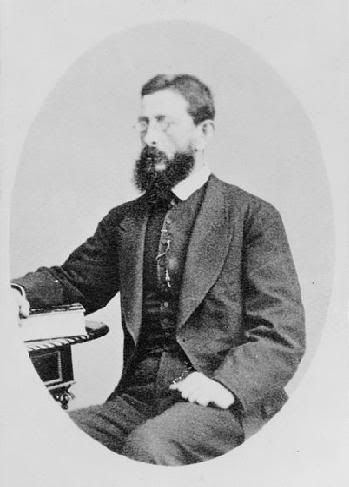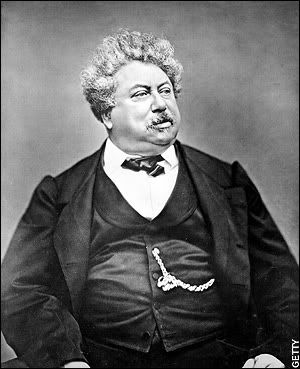The Californian Renaissance
Extract from “Independence to Empire, A New History of the Californian Republic” (By Chris Carmack and Michael Connor, Berkeley University Press, published 2007)
For all the traditional vitriol directed at the Kingdom of California, and despite its doubtlessly Machiavellian methods, one cannot deny the impressive, and in many cases lasting achievements of King Tibalto’s court. In particular, historians that follow the highly modern thesis of the “golden years of the reign of Tibalto”, from 1862 to 1866, have highlighted the cultural efforts of the King’s artificially-induced “Californian Renaissance”, and the genuine results they achieved. The project to enhance the Kingdom’s cultural pedigree and thus its international prestige were headed by one of the few prominent members of Tibalto’s court to emerge with much modern credit- Don Ricardo Luis Hernandez.
Hernandez had received a mixed upbringing: born in Spain, he was educated in France and Vienna, before completing his studies at Lincoln College, Oxford, in Great Britain, and eventually settling in California to take up the less significant part of his family’s estates (he was the youngest of four siblings). He was a firm devotee of Enlightenment ideas, and a subscriber to the German concept of Bildung (the idea that true class and quality came from a rounded intellectual, cultural and moral education). As such he was both the perfect advocate for a deliberate policy of investing cultural capital in the Kingdom, and an ideal agent for the enaction of such a policy. In February 1862, while Don Carlos del Serrano was busy crushing the Mormons in Deseret, Hernandez was charged with ultimate responsibility for the cultural well-being of a kingdom that ought, in the eyes of its ever-ambitious ruler, to be a beacon for the world.
Don Ricardo Luis Hernandez, the father of the "Californian Renaissance".
His achievements are visible, not least in an enormous number of buildings erected under his authority that still stand in contemporary California. The capital having been changed to Monterey and the Republic having been officially abolished, Parliament Square in San Francisco was a conveniently eligible site for renovation, and the First Republic’s already-impressive epicentre was converted and enhanced (with the help of re-fashioned rubble from the battle of 1860) into a glorious neo-classical set-piece. The Royal Opera House, Royal Californian Theatre, First Library of California (aptly named- it being the first public library in the country on opening in August 1864), and Californian Museum remain famous landmarks at the time of writing, changing the old Parliament Square forever into the Plaza Hernandez, in honour of its creator and designer. Indeed, almost all buildings in the neo-classical style in California can be credited to Don Ricardo, for they were either ordered from his office during the reign of Tibalto, or modelled on the striking prototypes he created during those years. The fact that such achievements were only possible through the use of money appropriated from political opponents and the slave labour of interned dissidents and prisoners of war, while it ought to be remembered, does not detract from the remarkable architectural and cultural achievements that they represent.
This photograph of the interior of Hernandez's Californian Museum typifies the neo-classical style he championed.
It was not merely architecture, but a variety of other cultural pursuits that flourished in the “golden years”. A hand-picked group of Hernandez’s agents were sent across Europe and the wider world (one went as far afield as Madagascar!) in order to literally import a cultural heritage to California. Among the most famous writers to answer the call (and lure of royal patronage) was Alexandre Dumas, whose romantic retellings of many of the events he witnessed during the Civil War have created a lasting impression in the public and indeed academic imagination, while noted composers included Félicien-César David and Verdi, and the Brazilian Pedro Américo and French Edouard Manet led the field in painting. This selective poaching of foreign artists and literati, particularly successful at harvesting the out-of-work courtiers of abolished Italian states, was to make Don Tibalto’s California, however briefly, the cultural envy of the world. Nor was education neglected: the Catholic church was placed in full control of primary education while considerable funds were made available for the establishment of new elementary schools for literacy, numeracy and religious studies (while also aiming to instil a sense of loyalty to the Bourbon dynasty at a young age). Furthermore, two new universities were founded to complement the small establishment in San Francisco (which received an increase of funds and expansion of its facilities), at Monterey and Los Angeles. Although they could only accommodate around 550 students between them, these initiatives doubled the number of places available for higher education in California, and provided a focal point for an influx of European and American academics into the Kingdom. Indeed, the Californian Renaissance was not even merely a human phenomenon- a large royal pleasure park just outside the growing city of San Diego was opened to the public for the first time in 1864 as the now world-famous San Diego Zoo, offering such curiosities as an African elephant and Sumatran tiger, and which was, in a gesture of royal magnanimity, free of charge to all visitors. Once again, it must always be remembered that such achievements were made possible only by the appropriation and use of the money of defeated political opponents, but they were impressive and lasting nevertheless.
French author Alexandre Dumas, who became a celebrated Californian literary figure after his arrival in the Kingdom in 1863.
Finally, Hernandez was charged with emphasising the Hispanic and Catholic nature of the Kingdom. As a result, Monterey’s cathedral, seat of the only archbishopric in California, was impressively re-styled in a Byzantine architectural style, while numerous beautiful churches were built across the country and various monasteries either extended or enhanced. Furthermore, steps were taken to ensure that the Spanish character of California was reinforced- a number of aristocratic families from the Old World who had fallen upon hard times, as well as those who simply held large estates on the Pacific coast, were invited to make the journey across the Atlantic and either take personal control of their possessions or help themselves to the confiscated lands of exiled and imprisoned Republicans. Among the most important families to heed the call was that of the father of Don Javier de la Vega. Don Marcos and his son Don Ridolfo were both given high-ranking positions within the Bourbon Army upon arrival in May 1863, and through their rapid rise to power illustrate the easy advantages that were available to those that made the decision to take up King Tibalto’s offer. At least 100,000 others, of varied social status, made the same decision.
Its armies seemingly invincible, its potential enemies in disarray, and its domestic prestige at an all time high, the Kingdom of California seemed destined to establish itself among the pantheon of great nations. Furthermore, the royal desire to enhance the Spanish and Catholic character of the realm had been served: education had been placed in the hands of the church and teaching was available in English only in purely English-speaking areas (of which there were very few); a considerable number of new Hispanic migrants had arrived; and most of the cultural, educational and architectural developments had occurred in the predominantly-Hispanic south. The only dark cloud on its otherwise-azure horizon was the stubborn refusal of the colonial Republicans to submit to the will of the Bourbon King. It is to developments among these “troublesome dissidents” that we must now turn.
 )
)



